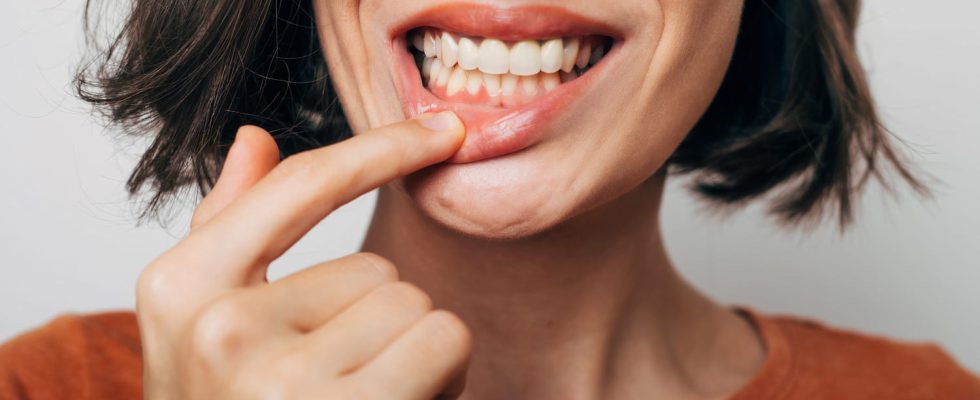Loose teeth are not normal. You must consult a dentist to slow down this loosening and prevent tooth loss. Solutions in the meantime.
Dental loosening corresponds to retraction of the gums around the teeth concomitant or not with bone loss. “Tooth loosening is often associated with periodontal diseasewhich is a bacterial disease affecting the tissues surrounding the tooth” explains Dr. Gokhan Yilmaz, dental surgeon. Certain pathologies such as diabetes, smoking or even stress promotes the appearance of this disease. However, gum retraction can also be due to traumatic brushing with a technique of inappropriate brushingorthodontic treatment, or tongue piercings or lips.
Solutions at home
When there is dental loosening, it is essential to consult a specialist for medical treatment. Waiting “initially, to prevent the loosening from getting worse, it is recommended that the patient use a brush soft tooth with circular movements as well as interdental brushes to optimize brushing. In case of sensitivity, suitable toothpastes can reduce discomfort” advises Dr. Yilmaz. The work at home therefore boils down to preventing dental loosening gets worse by adapting oral hygiene.
Natural solutions while waiting to consult
These temporary solutions but can be followed while waiting for the appointment with the dentist:
- THE coenzyme Q10 to prevent and fight against tooth inflammation;
- THE baking soda helps reduce dental inflammation;
- L’green tea extract to fight against dental plaque;
- THE aloe vera gel allows for better healing and for its anti-inflammatory benefits;
- L’avocado oilanti-inflammatory;
- L’grapefruit seed extractused as a mouthwash, for its anti-inflammatory, antibacterial and antiparasitic properties.
Solutions in the dental office
The initial treatment for loosening in the office is dental and periodontal sanitation, namely:
- A descaling,
- A curettage periodontal pockets using curettes or ultrasound,
- A surfacing
- and antiseptic irrigation to remove the bacterial cause (tartar, bacterial plaque, etc.).
When to do a gum graft?
Dental loosening can, in certain cases, be managed via gum grafts, a process which allows more or less restore the lost gum while reinforcing it. “The objective is to thicken the gum so that it is more resistant to trauma” specifies Dr. Yilmaz. Complete coverage will depend on the clinical situation and more particularly on the underlying bone. “The gum graft is a Surgery performed under local anesthesia in the office. A graft is taken at the level of palace or the tuberosity, there are then different techniques to position it on the site presenting the retraction”, explains the specialist. During the 2 weeks post-operatively, no brushing of the area is done, only mouthwashes are required to clean. The sutures are removed at 15 days and checks carried out at 3, 6 and 12 months.
If the patient does not want surgery and there are cold sensitivities at the level of tooth loss, it is recommended to cover this area with resin (composite) to protect and avoid its weakening.
Thanks to Dr Gokhan Yilmaz, dental surgeon, Lyon
